Ichthyosaura alpestris
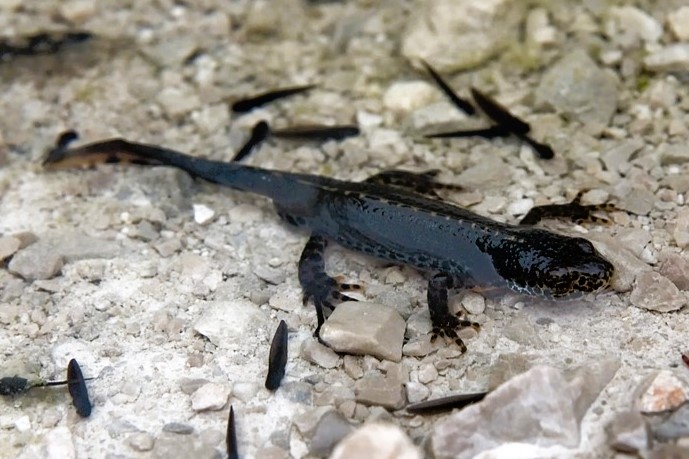


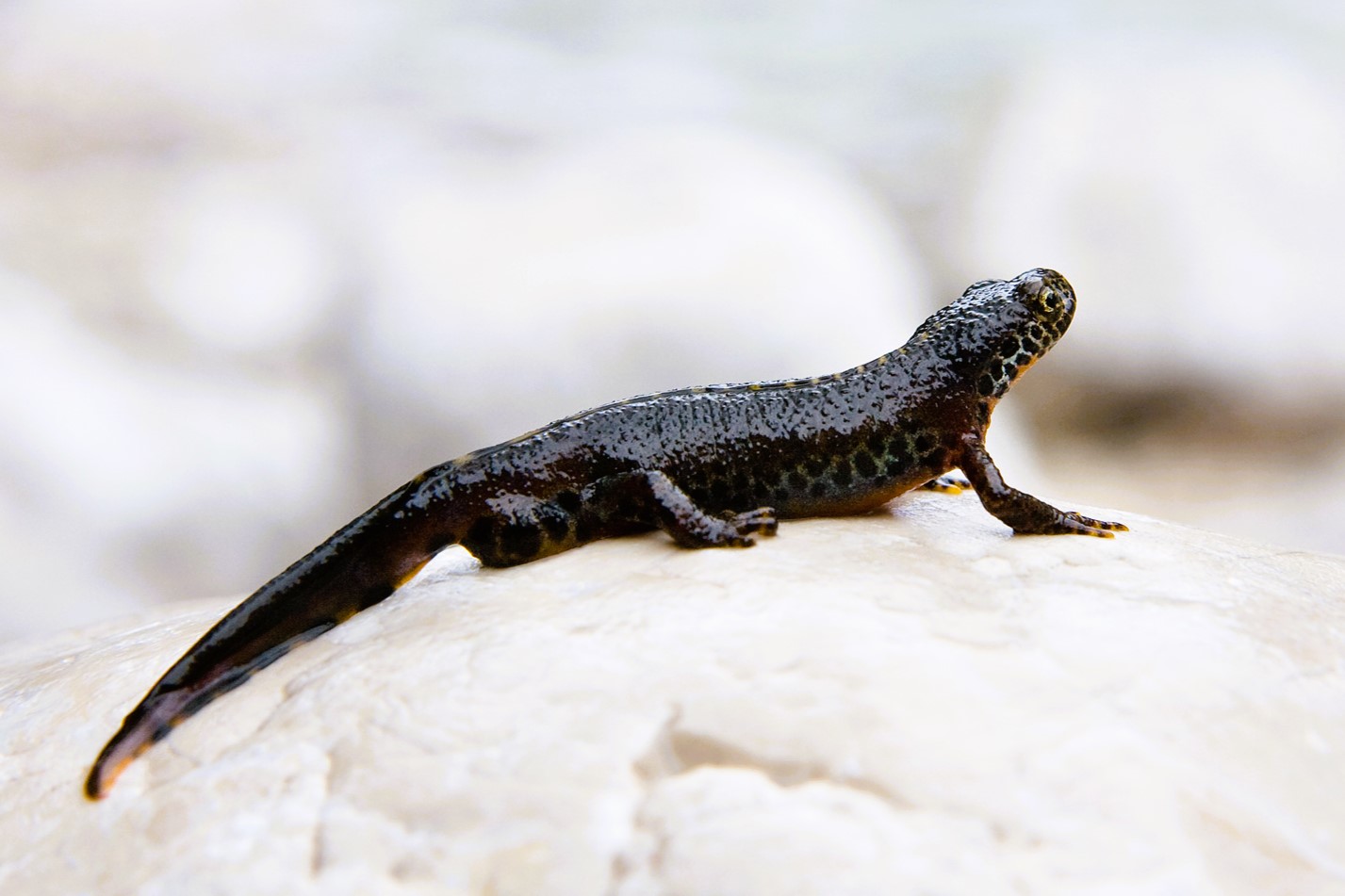
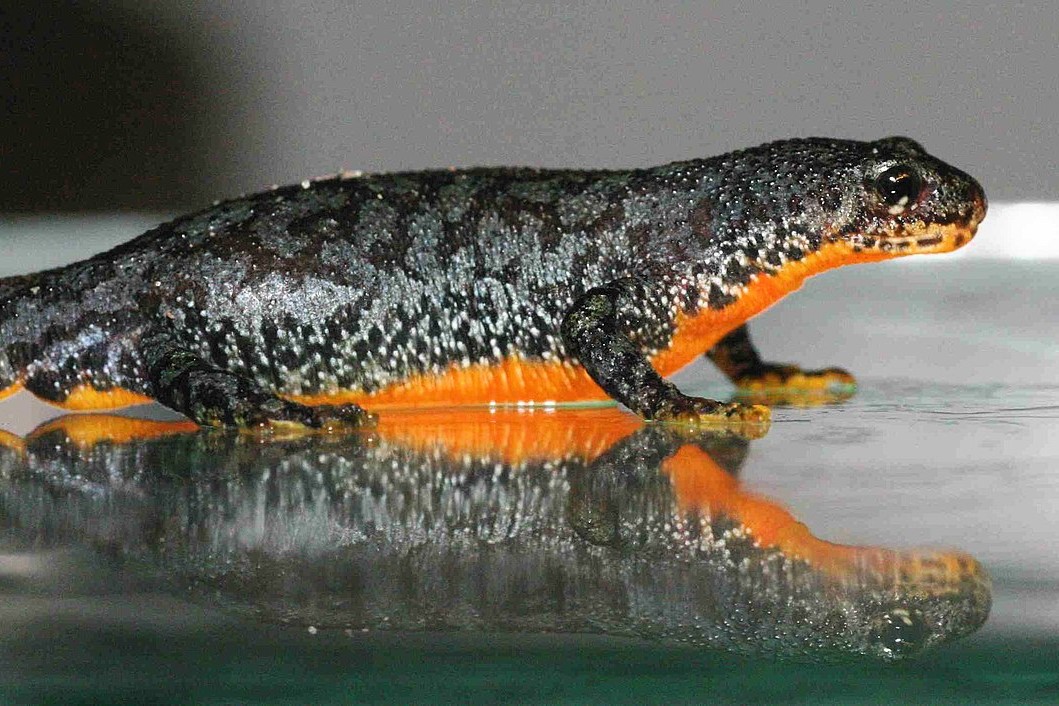
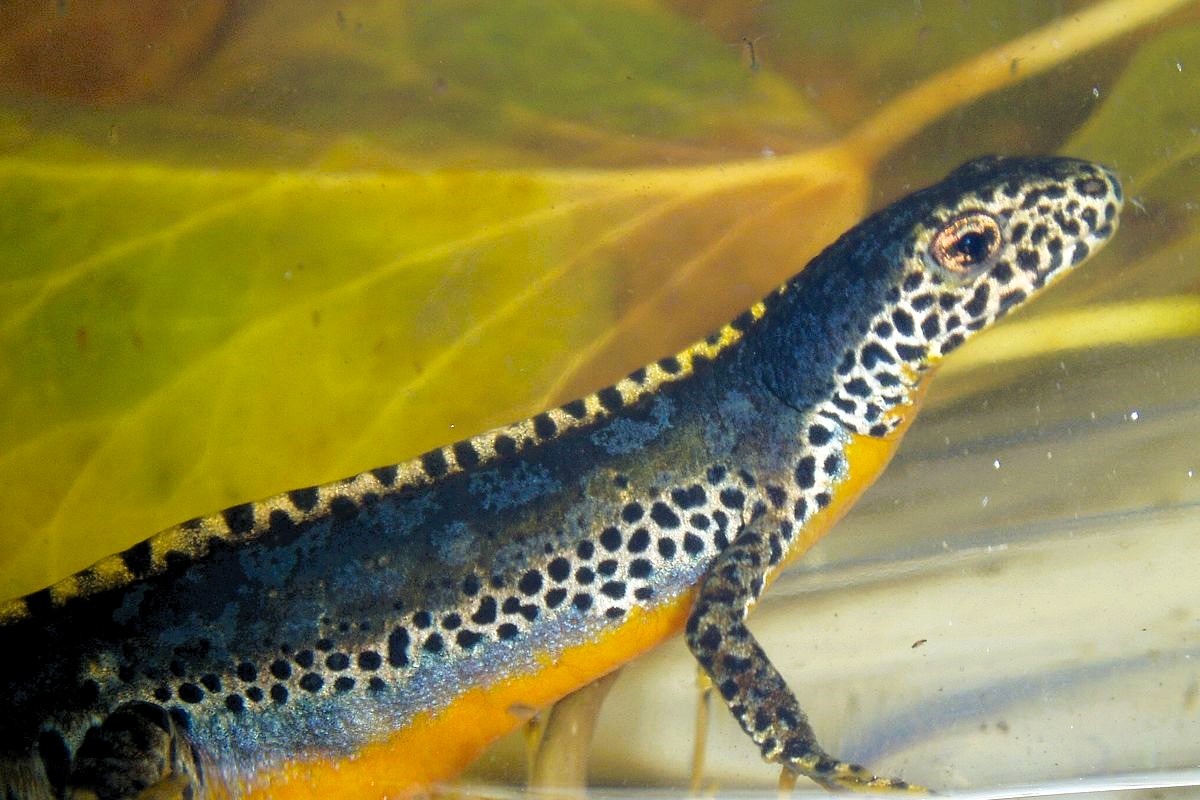
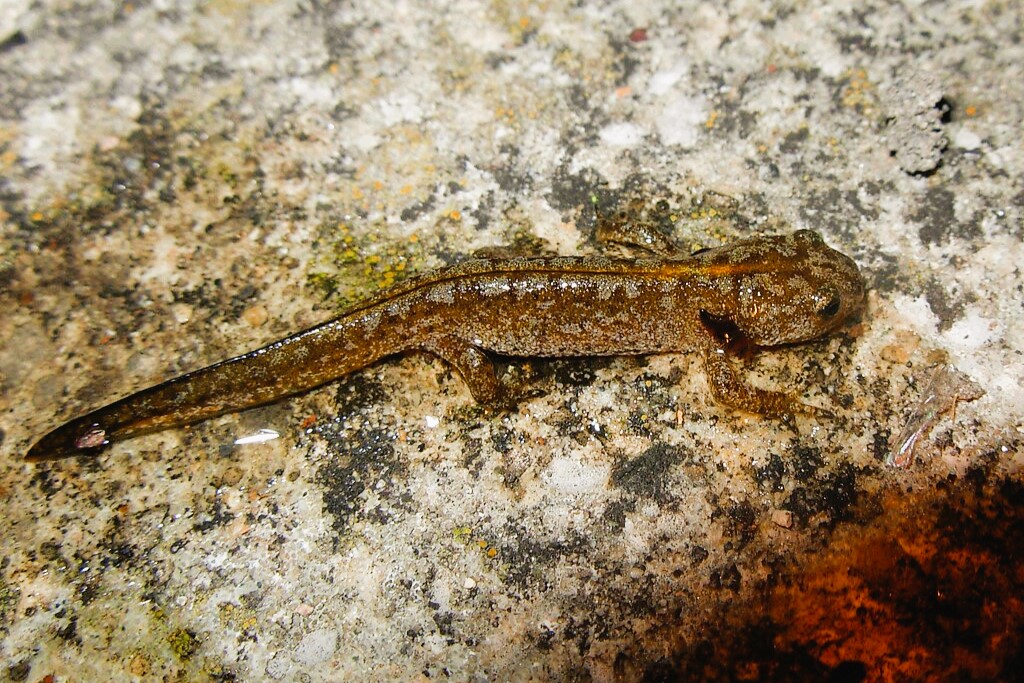
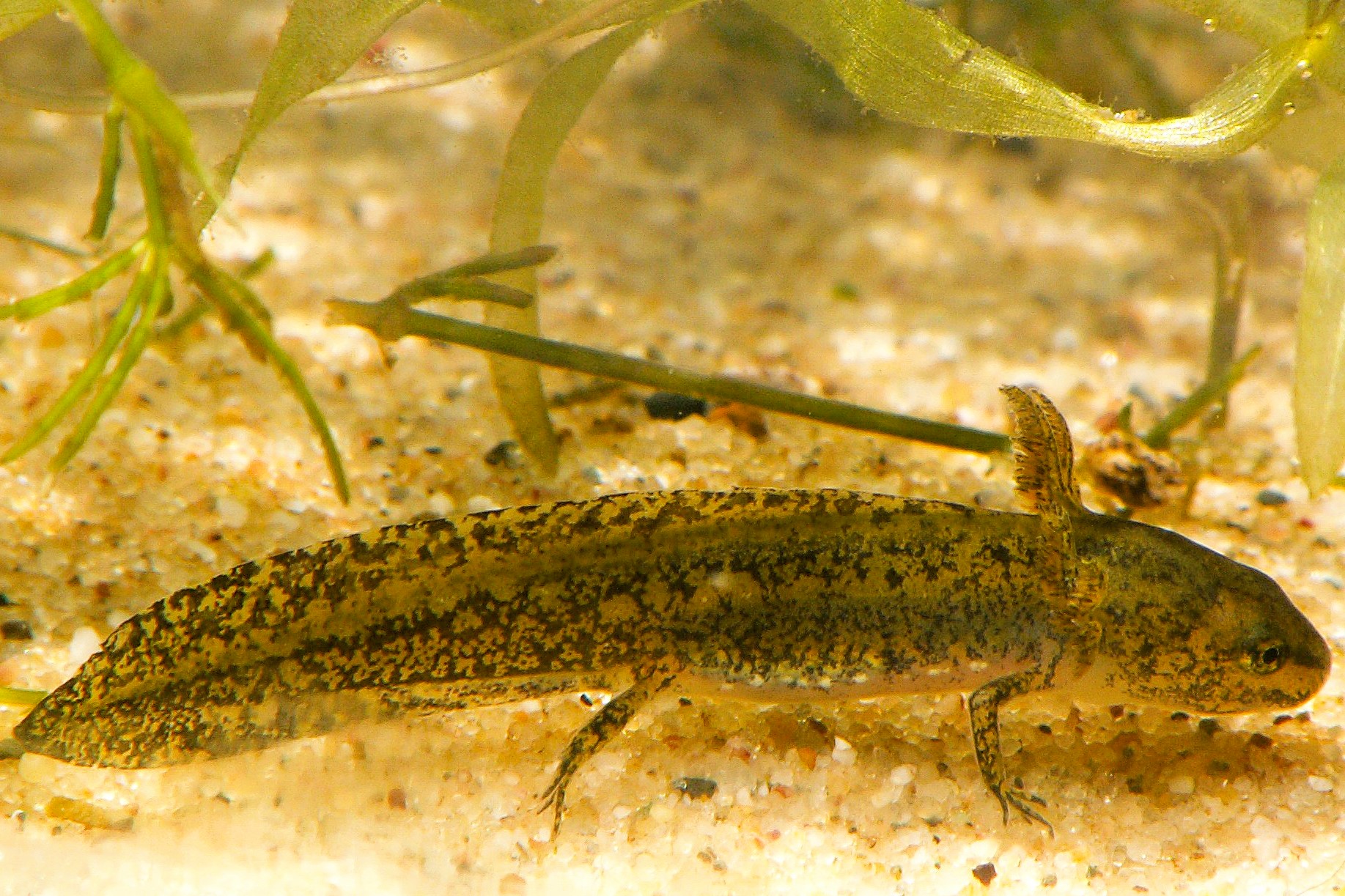
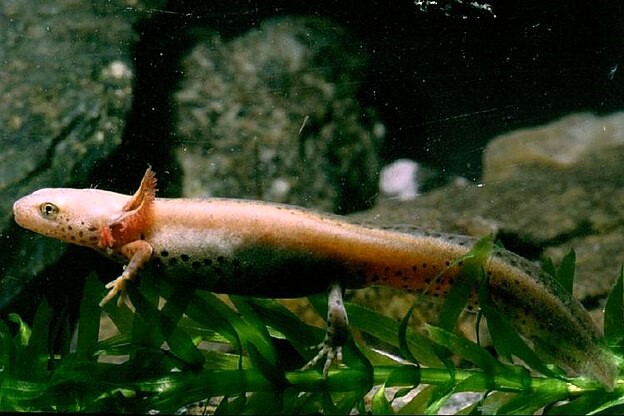
Amphibia → Urodela → Salamandridae → Ichthyosaura → Ichthyosaura alpestris
Lüxertu d'aegua, Salamandrin de muntagna
The Alpine Newt ( Ichthyosaura alpestris ) is a medium-sized urodeline amphibian, easily recognizable by the distinct sexual dimorphism, especially during the breeding period.
Adult males generally measure between 2.8 and 3.5 in (7–9 cm), while females can reach 3.1–4.3 in (8–11 cm).
During the breeding season, males display a striking nuptial coloration: the back takes on a vivid bluish hue, the belly becomes bright unspotted orange, a low, smooth dorsal crest develops along the body, and the flanks show a white-blue band dotted with black.
Conversely, females are more subdued in color, with a gray-brownish back and a less vivid orange belly.
Larvae, at birth, are about 0.28–0.31 in (7–8 mm) long and light yellowish with small dark spots, already adapted to aquatic life.
In western Liguria, the Alpine Newt is mainly found in the mountainous and submontane areas of the Ligurian Alps.
It can be found from 1,970 ft (600 m) up to over 6,561 ft (2,000 m) altitude, with larger populations in the main inland valleys (Valle Arroscia, Upper Tanaro Valley, Valle Roja).
The presence of the species at the highest altitudes demonstrates its remarkable adaptability to harsh environmental conditions and to life in high-altitude habitats.
The Alpine Newt favors a wide variety of mountain aquatic habitats, including:
In summer and autumn, the species spends time on land, taking shelter among vegetation, stones, or under decaying bark, but returns to aquatic environments for breeding season.
The Alpine Newt exhibits both diurnal and nocturnal behaviors, adapting to local temperatures and humidity.
The aquatic period coincides with the breeding season, which takes place from April to July or August depending on altitude, while the rest of the year is spent on land seeking cool, moist refuges.
Reproduction occurs in still or slow-moving waters, where the female lays 100–300 eggs, attaching them individually to aquatic plants.
The length of the larval development varies from 2 to 4 months depending on water temperature.
In some high-altitude populations, neoteny—sexual maturity while retaining larval features—can be observed.
The diet of the Alpine Newt is highly varied and depends on life stage and season:
This versatile diet allows the species to adapt to the various resources available in the diverse mountain habitats.
Among the main threats to the survival of the Alpine Newt in western Liguria are:
The Alpine Newt is among the newt species that reach the highest altitudes in Europe, showing a strong fidelity to breeding sites, to which it makes long annual migrations.
The male's nuptial coloration is among the most spectacular of all European amphibians, making it a point of interest for naturalists.
Its ability to navigate and return to the same sites year after year is especially pronounced.
Moreover, the neoteny phenomenon observed in some very high-altitude populations increases its ecological variability.
In western Liguria, the species is closely monitored to assess the impact of environmental changes, representing an important indicator of the conservation status of fragile mountain aquatic habitats.
Species protection depends on the conservation of mountain wetlands and the traditional practices that favor their persistence.